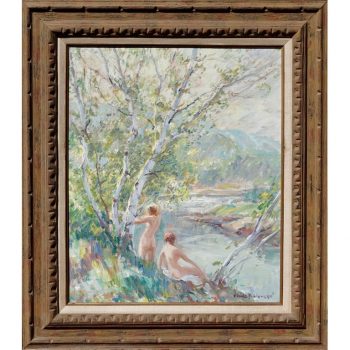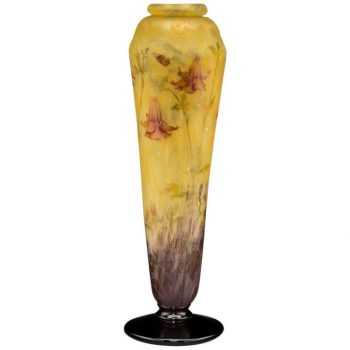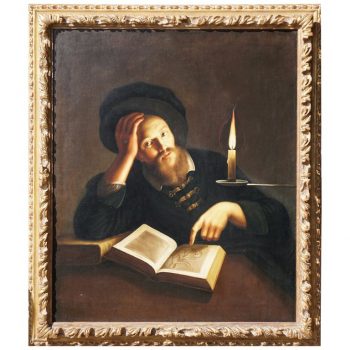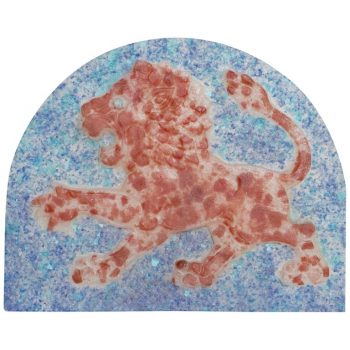Description
A large Loetz Astraea glass case Circa 1905
A lovely yellow and oil spot decor “Astraea” vase by Loetz. The glass vase is cylindrical in form with a three-lobed mouth. The background is a translucent yellow with moderate iridescence, further decorated with darker yellow “oil spots”. A wonderful decorative vase to add to your Art Deco- Art Nouveau collection
Excellent condition, free of cracks, breaks, chips or repairs.
Dimensions: 10 – 3/4″ x 6″ x 6″.
AVANTIQUES is dedicated to providing an exclusive curated collection of Fine Arts, Paintings, Bronzes, Asian treasures, Art Glass and Antiques. Our inventory represents time-tested investment quality items with everlasting decorative beauty. We look forward to your business and appreciate any reasonable offers. All of our curated items are vetted and guaranteed authentic and as described. Avantiques only deals in original antiques and never reproductions. We stand behind our treasures with a full money back return if the items are not as described.
Loetz was the premier Bohemian art glass manufacturer during the Art Nouveau period (or Jugendstil, as it was called in German-speaking countries) from roughly 1890 to 1920. Founded in 1840 by Johann Loetz in what is now the Czech Republic, the company became known for its innovative techniques, organic forms, and bold use of color.
Before Loetz became known for its Phänomen and “oil spot” pieces, it had pioneered a surface technique called Marmoriertes, which produced a marbled red, pink, or green surface on objects such as vases and bowls. Another late-1880s precursor to its most prized works are the Octopus pieces, whose white curlicue lines on a darker, mottled surface was thought to resemble the tentacles of octopi.
By 1889, Loetz was one of the region’s leading glassmakers. That year, the company took first prize at the Paris Exhibition for its classic vase forms, some of which were hand-worked and deformed into swirling, organic-looking shapes like seashells, flowers, and tree trunks. Decorative vases, cups, and pitchers were other popular forms in the Loetz lexicon, and many of the pieces practically glowed thanks to their iridescent sheen from the firing and reduction techniques that were popular at the time. For its contributions to the field, Loetz was awarded the grand prize at the Paris World Exhibition in 1900.
One of the most beautiful and collectible Loetz series from this period is called Phänomen, whose chief characteristic is the rippled or featherlike designs on the object’s surface. Loetz artisans achieved this unique effect by wrapping hot glass threads around an equally hot molten base. The threads were then pulled on the object’s surface to make waves and other designs while the materials were still malleable.
The company patented the Phänomen technique in 1898 and used it in combination with techniques pioneered by L.C. Tiffany in the United States—in particular, Tiffany’s iridescent Favrile work.
Please also consider Avantiques eclectic Art Glass and Pate De Verre collection including Emile Galle, Daum Nancy, Schneider, Argy Rousseau, Almeric Walter, D’Argental, St Louis, Decorchemont, and Louis Comfort Tiffany Studios. We strive to collect the highest quality Glass pieces in exceptional condition.





